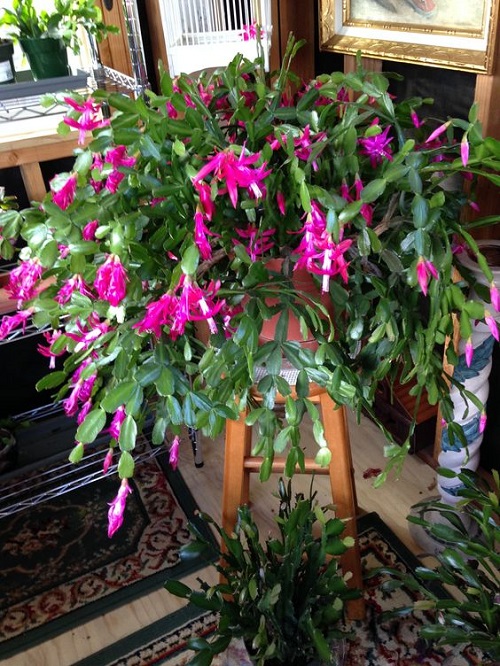Learn How to Feed Your Christmas Cactus by following the regimen of commercial growers for the best blooms this season!
Christmas cactus is a beautiful cascading succulent that becomes the most significant plant around Christmas. Lush with timely white and scarlet holiday blooms, here’s the fertilizer regimen followed by commercial growers so you may do the same right at home!
Christmas Cactus Fertilizer Needs
Christmas cacti go through three main phases—they grow from spring to early summer, enter dormancy till early fall, and finally blossom from late fall through winter. Each phase requires different care routines, including changes in the fertilizer regimen.
In their growth phase, the plant produces new segments and builds strength. In dormancy, it rests and prepares for blooming, and when flowering, it focuses its energy on producing flowers. But before seeing how much to feed, you must choose the right fertilizer!
Commercial growers typically use balanced, water-soluble fertilizers with an NPK ratio of 20-20-20. Nitrogen supports leafy growth, phosphorous promotes roots and flowers, and potassium improves plant health and stress tolerance.
Choose a slow-release feed meant for houseplants. Still, we recommend using a custom fertilizer you can make yourself for your Schlumbergera.
How to Feed Christmas Cactus
1. Fertilizing During Growth Stage
During active growth in spring and summer (March to July), use a balanced liquid fertilizer like 10-10-10 at half strength every 3-4 weeks. You can do it more frequently, every 10-14 days, if you apply it in one-sixth or one-quarter strength.
Water the plant with the diluted fertilizer after the soil partially dries out. Christmas cacti also need a little extra magnesium for robust growth.
Feed with Epsom salt (magnesium sulfate) every other month, but not during the same week as the other fertilizer. Mix a teaspoon (5 ml) of Epsom salt into a gallon of water, and that’s it!
2. Feeding Regimen in Dormancy from August to October
During dormancy in early fall, typically between August and October, switch to a fertilizer with a lower nitrogen level and high phosphorus content, such as 5-10-10 or 10-15-10. Fertilize in a similar frequency as shared above but reduce the watering frequency from mid-fall.
Allow the soil to dry more between watering spells to imitate natural rest conditions. This phase will help the plant develop potent buds for flowering. Continue doing this for about 8 weeks.
3. Fertilization During Flowering
From late fall through winter, your Christmas cactus will blossom. During this phase, stop fertilizing entirely. Excess nutrients can divert energy from flower production to foliage growth, reducing the number or quality of blooms.
Instead, focus on keeping the soil consistently moist but not soggy. After blooming ends, you can resume a light feeding schedule with a balanced fertilizer to maintain plant health.
Pro Tip: Sometimes, your Christmas cactus may benefit from a diluted application of a bloom-boosting fertilizer during early flowering, but this should be done cautiously.
Additional Tips to Consider
- Avoid overfeeding, as excess fertilizer can harm the roots and lead to poor flowering.
- Use distilled or filtered water to prevent salt buildup, which can occur with tap water or overly concentrated fertilizer.
- Monitor light and temperature; proper feeding works best when combined with bright, indirect light and stable temperatures around 65-75 F (18-24 C).
- Flush the soil every 4-6 weeks by watering thoroughly with plain water to remove any accumulated salts.





